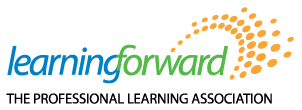Prioritizing the Selection and Implementation of High-Quality Instructional Materials
This planner is focused on supporting identification, selection and implementation of high-quality instructional materials as well as curriculum-anchored professional learning for several reasons:
About
- Federal programs and funding were established to promote a targeted focus on accelerating positive outcomes for all students. A meaningful and effective focus on reaching all students includes an examination of the resources and support available to our most vulnerable students and the educators who serve them. Research has consistently shown two strategies that benefit these educators most, as well as their students, are 1) availability of high-quality instructional materials and 2) support to implement them effectively.
- More than two-thirds of Title IIA funds spent on professional learning show varying degrees of success. Growing evidence demonstrates that professional learning consistently produces better outcomes for educators and students. Education leaders at all levels have a responsibility to pay attention to this research.
- A compelling body of research demonstrates the impact of high-quality instructional materials on teacher practice and student outcomes. We are all aware that our most vulnerable students are often taught by least-prepared or under experienced teachers. Putting high-quality instructional materials in the hands of all teachers, but most importantly new and inexperienced, should be non-negotiable in all schools. Identifying and locating instructional materials from an approved resource provide necessary assurances that they are aligned to standards with appropriate levels of rigor for the grade level and the work meets the student age and grade-level. There is no conceivable reason why 3 million teachers must repeat this process for themselves. Beginning with quality materials positions teachers to know what support to ask for to ensure that students meet and exceed standards. Teachers are also able to better use their time to focus attention on adapting such materials to meet the unique context and interests of their students.
- In and of itself, placing great materials in the hands of teachers may produce important outcomes. Embedding those materials in grade-level or course-specific learning teams that engage in ongoing cycles of learning and problem-solving increases the impact on educators and students. The new definition included in ESSA calls for professional development that is intensive, data-driven, job-embedded and classroom-focused. Teachers engaged in professional learning communities that use cycles of continuous learning and improvement anchored in high-quality instructional materials represent a high degree of alignment with the definition and research. Many schools already have PLC structures in place; by working through these stages with their related tools and resources, LEAs can learn how to leverage such structures to deepen and accelerate the impact on educators and students.
- States and even some local school systems have been reluctant or resistant to engage in the review and implementation of high-quality instructional materials. We encourage states and LEAs to rethink this stance. Compelling evidence suggests how these investments can contribute to improvements for students and teachers. Such research and practice can serve as a call to action as more states find ways to incentivize and support such adoptions. For years states have invested dollars in state textbook lists and PD-provider-approved lists. Instead, states and local systems leaders can consider investing those funds in practices with proof of effectiveness rather than promises of impact.
- ESSA calls for evidence to inform decisions regarding expenditures of funding as well as to document the impact of the investments. This planner will guide users so they can accomplish both required activities.
Unfortunately, few educators and decision-makers, themselves, have experienced the kind of high-quality professional learning that transforms practice. So, they rarely understand the comprehensive set of conditions that must be in place to create systems and cultures that support continuous learning and improvement. States can leverage ESSA to lead by example and support districts so they can experience a new kind of learning and improvement system.
